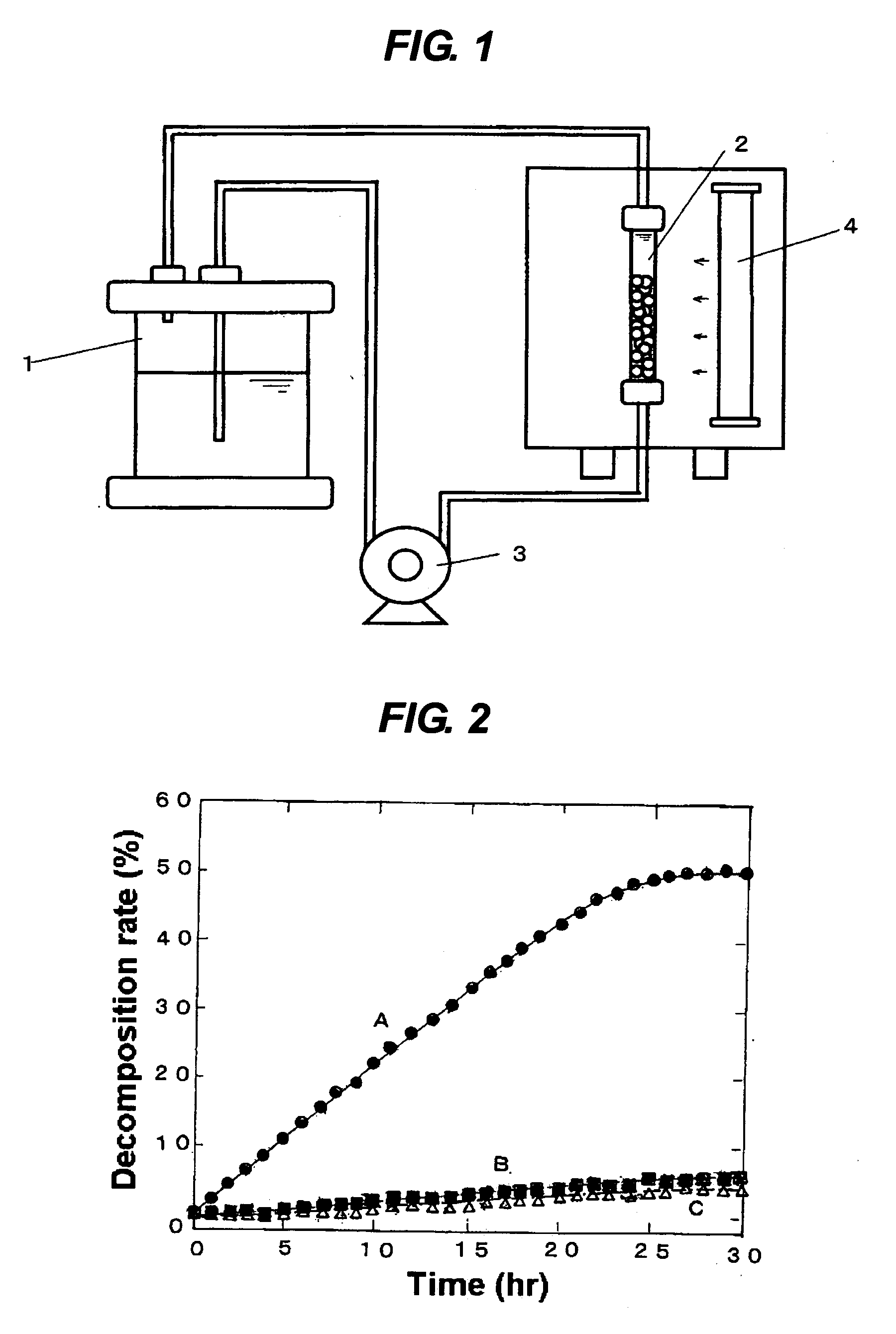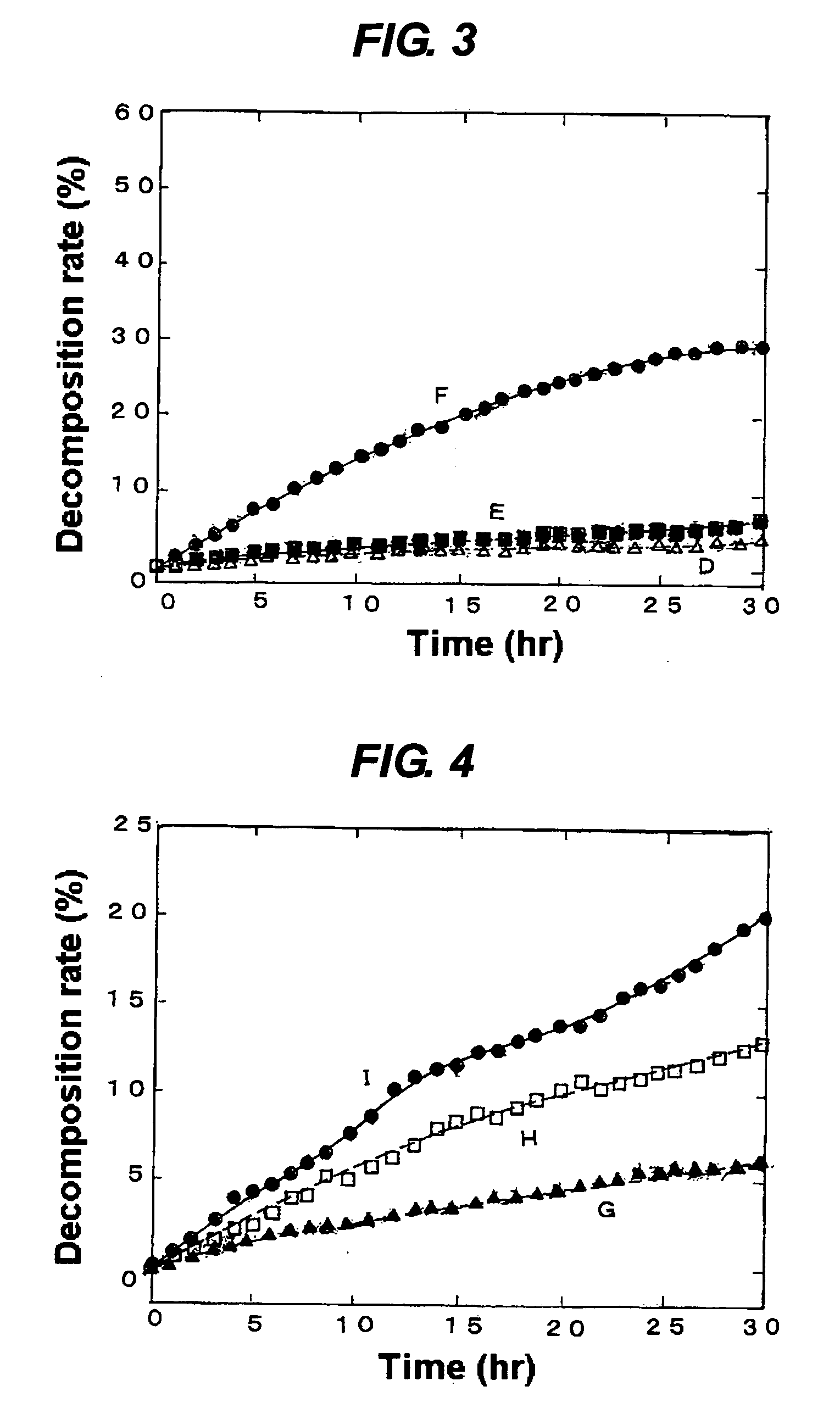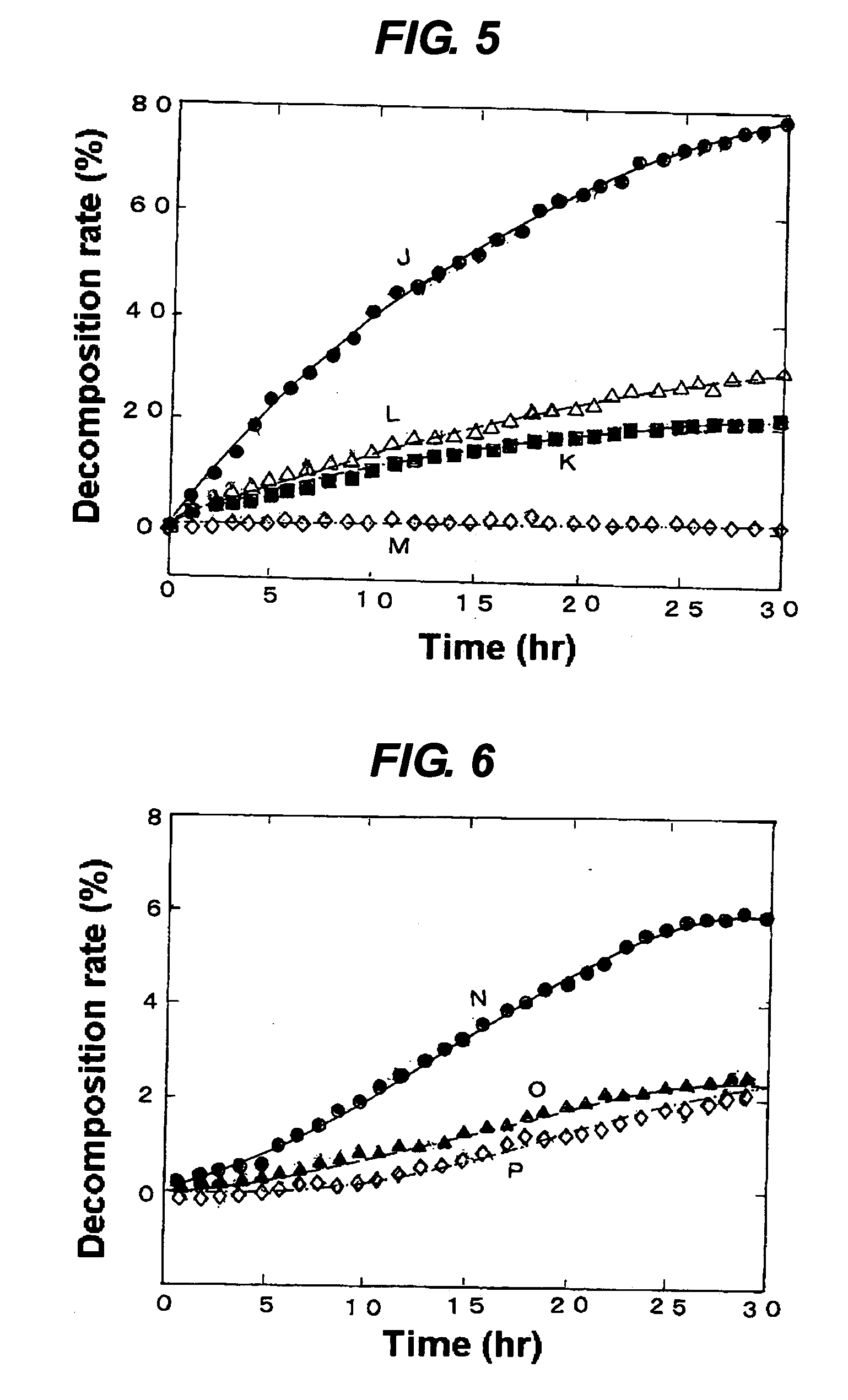Novel photocatalyst and method for producing same
a photocatalyst and photocatalyst technology, applied in the field of new photocatalysts, can solve the problems of low conversion rate of at most 30%, no photocatalyst can provide so high conversion rate, etc., and achieve the effects of eliminating environmental pollutants, reducing cost, and convenient obtaining
- Summary
- Abstract
- Description
- Claims
- Application Information
AI Technical Summary
Benefits of technology
Problems solved by technology
Method used
Image
Examples
example 1
(1) Preparation of Photocatalysts
[0050] An artificial quartz crystal was crushed in a ball mill followed by screening to obtain a fraction (a) having a diameter of 1-2 mm and a fraction (b) having a diameter of 2-3 mm.
[0051] Then, 50 ml of the fraction (a) or the fraction (b) mentioned above were immersed in 300 ml of an aqueous solution of hydrogen fluoride in a concentration of 10% by mass, stirred for 5 minutes, washed with water and dried to prepare a photocatalyst (A) or (B). For use as a control, a photocatalyst (C) was prepared from the fraction of 1-2 mm diameter without undertaking the hydrogen fluoride treatment.
(2) Photolytic Reaction
[0052] Photocatalysts (A), (B) and (C) prepared in (1) were used to carry out the reaction for photodecomposition and decoloration of methylene blue, and comparison was made for the catalytic activity thereof.
[0053] Namely, in an apparatus having a configuration shown in FIG. 1, 1000 ml of an aqueous solution of methylene blue having a...
example 2
[0055] An artificial quartz crystal was pulverized in a ball mill, and a fraction of a diameter of 2-3 mm was recovered from the resultant particles.
[0056] Then, the fraction of the artificial quartz crystal was divided into three portions, which were then immersed in an aqueous solution of 10% by mass of hydrogen fluoride for 5, 10 and 20 minutes, respectively, to prepare photocatalysts (D), (E) and (F).
[0057] These photocatalysts were used for assessment of the decomposition rates of methylene blue in the same manner as in (2) of Example 1. The results are shown in a graph giving those changing over time in FIG. 3.
[0058] The results demonstrate that when an aqueous solution of hydrogen fluoride in the same concentration is used to treat different samples of artificial quartz crystals with the same particle diameter, a sample treated for a longer time exhibits a higher photocatalytic activity.
example 3
[0059] An artificial quartz crystal was pulverized in a ball mill, and a fraction having a diameter of 2-3 mm was recovered from the resultant particles.
[0060] Then, the fraction of artificial quartz crystal was divided into three portions, which were then placed in three different kinds of aqueous solutions each having concentrations of 10% by mass, 15% by mass and 20% by mass, and treated therein for 5 minutes. In this way, photocatalysts (G), (H) and (I) were prepared.
[0061] These photocatalysts were used for assessment of the decomposition rates of methylene blue in the same manner as in (2) of Example 1. The results are shown in a graph giving those changing over time in FIG. 4.
[0062] The results demonstrate that when aqueous solutions of hydrogen fluoride in different concentrations are used to treat different respective samples of artificial quartz crystals with the same particle diameter for the same period of time, a solution having a higher concentration exhibits a high...
PUM
| Property | Measurement | Unit |
|---|---|---|
| particle diameter | aaaaa | aaaaa |
| particle diameter | aaaaa | aaaaa |
| wavelength ranges | aaaaa | aaaaa |
Abstract
Description
Claims
Application Information
 Login to View More
Login to View More - R&D
- Intellectual Property
- Life Sciences
- Materials
- Tech Scout
- Unparalleled Data Quality
- Higher Quality Content
- 60% Fewer Hallucinations
Browse by: Latest US Patents, China's latest patents, Technical Efficacy Thesaurus, Application Domain, Technology Topic, Popular Technical Reports.
© 2025 PatSnap. All rights reserved.Legal|Privacy policy|Modern Slavery Act Transparency Statement|Sitemap|About US| Contact US: help@patsnap.com



